Vietnam- a country with a huge export potential
Nowadays few people know this is a country, which suffered terribly from the war what reminds of the wilderness and ruin. Despite the painful history, Vietnam export products today conquer the world and bring money to Vietnam trough export.
For over 40 years, the country had swallowed its pains and boosted its raise from a rubble to gradually form and flourish in every sector. Today this south-east Asian country has stronger and stable agriculture than ever before.
Nowadays, Vietnam offers enormous export opportunities for local entrepreneurs, who want to start exporting business. And not only for local people, export-import opportunities in Vietnam are available also for foreigners
If you want to start your own export/import business and you want to know what Vietnam Exports and what are some of the best business opportunities in Vietnam. Then the answers and business opportunities will arise mainly from the agricultural and its close sectors.
Attention new entrepreneur! Learn, how you can make money in import export business nowadays, enroll our 100% FREE mini-course below:
Today, Vietnam is proud of being a country of excellence in export and import. The year 2017 Vietnam also established a new record of import and export when the total flow of exports exceeded 400 billion dollars.
No matter you are local Vietnamese and looking to start your own export-import business in Vietnam. Or you are a foreigner, looking at the export-import business opportunities in Vietnam.
This article will give you a list of some of the most promising export-import opportunities and ideas in Vietnam nowadays.
Below is the list of (4) most exported products by Vietnam- all those products and their sub-categories offer great export-import business opportunities.
1. Vietnamese coffee- great export/import opportunity

In 1857, coffee trees were planted by Catholics in Vietnam. They were first planted in some churches in Ha Nam and Quang Binh. North Central. Since then the area of coffee has been expanded.
Since 1994 – Vietnamese coffee trees, especially latte coffee, have developed very fast and achieved results in many aspects. It can be said that in the agricultural sector, coffee is just behind rice and has a firm foothold into important production in the national economy.
Coming to Vietnam, coffee is one of the most popular and widely exported products with the special taste stands for the deep of culture and people leisure. Drinking coffee in the morning is the habit of local people. Vietnam is the second country export coffee in the world, really “a real competitor of Brazil coffee industry”.
So, Vietnamese coffee indeed is a great export-import opportunity.
Geographical & climatical advantages support growing and exporting the coffee
Mentioning the land of coffee in Vietnam, the Central Highlands provinces with famous coffee regions such as Cau Dat, Nui Min, Tram Hanh (Lam Dong) and especially Buon Ma Thuot (Daklak) – where has the largest Robusta coffee region.
At elevations above 1,500 m above sea level, there are many sloping hills with cool climate, these lands of Lam Dong are ideal places for Arabica to grow and produce quality beans in the world’s second best.
Especially, Cau Dat coffee is considered as the “Queen” of coffee by its special aroma.
“FAS maintains an estimate of total coffee production in Vietnam in 2016/17, including green coffee beans, roasted and ground coffee, reaching 27.55 million bags. Total exports for 2017/18 were adjusted from 26.65 million bags to 28.15 million bags, mainly due to increasing domestic production.” (Vietnam trade promotion agency)
As we know there are over 70 different types of coffee in the world, but two main groups of coffee are Robusta, Arabica depends on the advantages of productivity and the quality also the adaptability characteristics of each plant.
Vietnam has the advantage of producing large Robusta coffee beans in the world, while it is the main raw material for instant coffee processing. Therefore, Vietnam has a great opportunity because of the abundant source of raw materials.
Vietnam is located in the tropical belt, the weather is very sunny each year. Rainfall is distributed evenly between months of the year, especially the months of coffee growing.
Vietnam’s climate is divided into two distinct areas. The tropical climate of the south is tropical with humidity suitable for Robusta coffee. The climate of the north is cold and drizzly with Arabica.
On land: Vietnam has red basalt soil suitable for coffee trees distributed throughout the territory, concentrated in the Central Highlands and South East with millions of hectares. This condition gives Vietnamese coffee its own special flavor, which other countries do not have.
In the future, Vietnamese coffee will continue being popular and spread everywhere. Everyone who has tasted Coffee in Vietnam knows that this coffee has very different and smooth taste compared Arabian and Brazilian coffee.
Vietnamese coffee is still not very common in western countries. It presents a huge export opportunity and the key to success for entrepreneurs is- how to market this product properly to gain popularity and get export buyers.
Attention new entrepreneur! Learn, how you can make money in import export business nowadays, enroll our 100% FREE mini-course below:
How about importing other coffee into Vietnam?
For foreigners, this can mean exporting opportunity. It is possible to export different kinds of coffee to Vietnam, so local people have more alternatives for the local Vietnamese coffee.
Previously, the Vietnamese coffee market has only a few dominants brand names such as Trung Nguyen, vinacafe,.. now there is an intense competition of domestic and foreign enterprises from 2013. The coffee market is really warming up when Starbucks starts to increase its presence, followed by South Korea’s Coffee Bene,..
The fight in the chain business is also really explosive with the ambition to share the market. One step ahead, Starbucks after two years of entering the Vietnamese market, has announced the sale of its Vietnamese coffee, DaLat Blend, at more than 21,500 stores in 56 countries.
2. Textile & garment-traditional Vietnamese export products
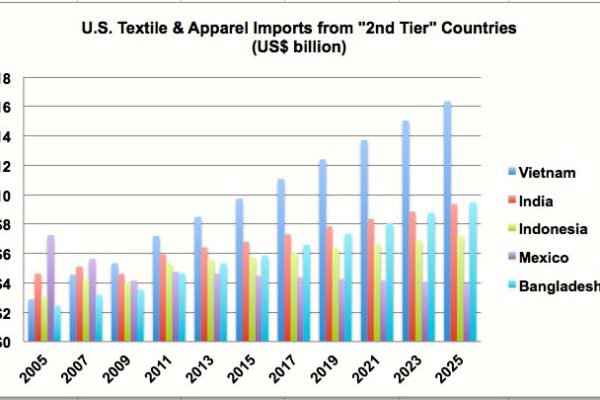
As the graph shows, Vietnam is the biggest supplier of textile and apparels for US. There is no doubt, that this presents great export import opportunities for both Vietnamese exporters and foreign importers.
Recent years, along with the development of the mass media, the need to be improved in appearance has been increasing strongly. Many fashion trends are constantly improving to appropriate the tastes of users.
When life quality improves, people are aware of being fashionable and always in the demand of looking for matching items. Not only in Vietnam, the world is looking for new ideas and breakthroughs in fashion. This all will cause continuously increasing demand for the garment and apparels sector in general.
Textile has been one of the most important contributors to the export-oriented economy of Vietnam. According to statistics by the General Department of Customs, in the first 11 months of 2017, Vietnam’s textile and garment exports reached USD 28.84 billion, an increase of 11% over the same period in 2016.
Vietnam is very competitive with Textile and apparel
Because costs for manufacturing in Vietnam are very low, compared with China example, then this allows Vietnam to gain a large share of the textile and apparels markets. This means also higher profit margins for exporters, so this is a great export business opportunity in Vietnam.
With the current growth rate, the Vietnam Textile and Garment Association expects the textile and garment export turnover in 2018 to reach $ 35 billion, surpassing $ 1 billion over the plan, will be the highest growth rate in five years.
Textile is and will remain one of the best Vietnam export products.
Textile fiber exports totaled 1.23 million tonnes, or US $ 3.27 billion, up 15.7% in volume and 22.9% in value year on year, completing 96% whole year plan.
Exports of garment and textile materials reached USD 1.57 billion, up 14.8% over the same period, fulfilling 100.3% of the plan.
Exports of cord fabrics, engineer fabrics were estimated at $ 421.3 million, up 9.2%, fulfilling 97% of the year plan.
Export turnover has increased in many key commodities and key export markets. In particular, the United States remains the largest consumer market, reaching over $ 6.3 billion, corresponding to the increase of nearly 10% and accounted for more than 46% of total turnover.
In addition, Vietnamese textiles and garments make an important milestone when it exports garments to the Chinese market for the first time, worth about $ 1 billion.
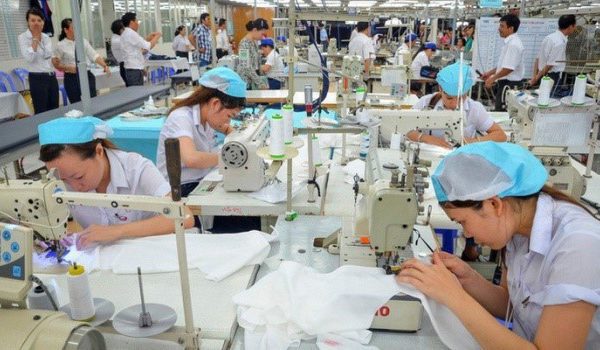
This shows that Vietnamese companies have tried to find new markets in the past year, in addition to producing new products to exploit traditional markets such as ASEAN, Eastern Europe, the EU and Japan, and Korea.
Vietnam textile & garment industry can take advantage of some strengths
Vietnam has many advantages for foreign investors, local exporters and foreign importers-exporters.
The first priority is the equipment of the garment industry has been renovated and modernized to 90%. The products have better quality, and totally subjugate difficult markets like USA, EU, Japan…
Secondly, textile and garment enterprises have successfully built close relationships with many importers and big consumer groups in the world. Vietnamese businesses are also appreciated by customers as having advantages in terms of labor cost, skills, and good workmanship.
Many of the world’s leading apparel companies such as Express, Hucke, Itochu, Kmart, Li & Fung, Sara Lee, Sumimoto, Jupita, Lee Cooper, Mast Industries, Nichimen, Nissho Iwai, Otto, Seidensticker, JC Penney , Tommy Hilfiger, Victoria’s Secret, Nike, Adidas and Walmart have come to sourcing from Vietnam.
In addition, Vietnam is highly regarded for its political stability and social security, which is attractive to foreign traders and investors.
Vietnam itself actively participates in economic integration region and the world also expanded market access for exports in general and export textiles in particular.
Finally, Vietnam’s integration into the regional economy and the world economy also facilitates better market access for textiles. Vietnam is now a member of the WTO and has also signed and implemented many important free trade agreements such as the Vietnam-Japan Trade Partnership Agreement, ACFTA, AKFTA, ASEAN-Australia-New Zealand, etc.
There tend to be a lot of middlemen in garment and apparels trade, that’s why we suggest making sure the full supply chain for those products. If you know well, who exactly purchase from where and what volumes and prices, then it is much easier to focus your marketing and get buyers more easily.
Related article: How to do export marketing to get more export orders.
3. Phone & electronic components-Highly profitable export products
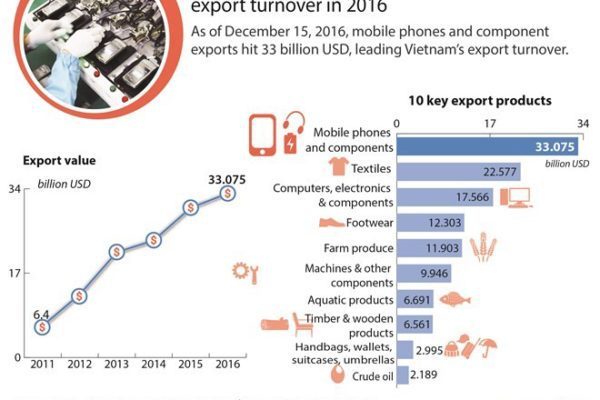
Phone and electronic components sector in Vietnam offers both: export-import opportunities and also investment opportunities.
November 6th, 2014, Laird Global Technology Company (UK) officially inaugurated its first factory in Vietnam. This factory is located in Bac Ninh, the capital of Vietnam electric factories with a series of electronic components factories and two large scale mobile phone factories: Samsung and Nokia.
In fact, Laird is not the only name in Vietnam because of the appeal of large scale cellphone manufacturing plants in Vietnam, with Samsung being the largest (with $ 2.5 billion in North Ninh and 2 billion in Thai Nguyen).
Vietnam’s electronic components are quite diverse, ranging from basic components to complex, high value components with the participation of FDI and joint ventures domestic industry.
FDI enterprises mainly invest in assembling electronic components and assemblies in large quantities such as circuit boards, electronic boards, electronic chips, air conditioners, refrigerators, mobile phone, a small part of these components are provided to domestic enterprises, the rest parts are exported.
In 2017, Viet Nam exported $ 45.27 billion worth of phones and accessories, up 31.9% from 2016. Mobile phone exports reached 184.4 million units to Russia, Germany, Austria, Indonesia, USA, Arab …
From 2015 to now, Vietnam is the 12th largest electronic exporter in the world and the third largest in ASEAN. Export turnover of the electronics industry also achieved impressive results: Vietnam is expected to become one of the major electronics exporters of the world in 2018.
However, 95% of export turnover belongs to foreign-invested enterprises.
Since Vietnam is in its early stages of development, Vietnam’s electronics market is full of the passive characteristics of a technology-transferable manufacturing industry.
At present, domestic manufacturers have not been able to innovate in technology, but only in processing products, factories producing electronic equipment and modern technology with the leading technology in Vietnam are all foreign manufacturers.
On the speed of development of the market, in recent years, Vietnam has joined international economic integration, culminating in joining the World Trade Organization – WTO, exchanging goods with other countries.
In the world, electronic products are no exception, so people have the opportunity to contact and consume these items more and more.
With the decreasing prices of electronic goods, prices of imported goods in the country are not much higher than those of foreign countries due to the increasing competition and the people’s living conditions, which has led to a strong increase in consumption.
Exporters and importers can trade smartphone cases, batteries, screens, and accessories. There are plenty of export and import opportunities in Vietnam electronic sectors.
However, dealing with electronics and batteries, you as an exporter, need to be aware of the possible risk those items can cause.
Related article: Biggest risks in Export import and how to avoid those.
Attention new entrepreneur! Learn, how you can make money in import export business nowadays, enroll our 100% FREE mini-course below:
4.Vietnamese rice- the pearls oF the land
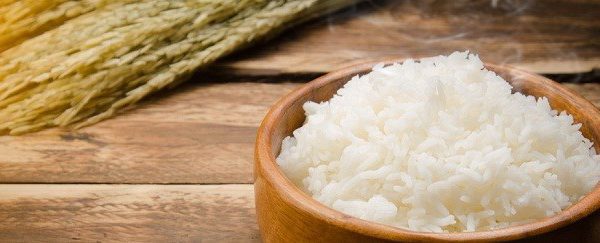
Vietnam has been a supplier of rice from the ancient times. Rice was and remains a great export import opportunity for local entrepreneurs and also foreign importers.
It is so because Vietnam has a lot of advantages in growing and developing agricultural crops, particularly rice.
Vietnam is a country with a tropical monsoon climate and fertile soil- very suitable for rice.
Rice is also the main foods in Vietnamese and Asian meals.
Rice is the regular food of more than half of the world’s people and provides more than 20% of the total daily energy of humanity. For more than 2 billion people in Asia, rice provides 60 to 70% of calories.
Rice is becoming more and more popular in the Americas, the Middle East and especially Africa, as rice is considered healthy and nutritious food suitable for diversification of daily meals.
Annual rice consumption per capita of Asia from 60 to 200 kg, Vietnam nearly 170 kg. Rice and other products are also used to prepare foods such as bread, rice paper, vermicelli, flour, fast food, oil, or beverages.
Rice is a carbohydrate mixed with starch (80% ), a major source of energy, protein (7.5%), water (12%), vitamins and minerals (0.5%) needed for the body.
Vietnam Rice export in 6/2018 is estimated at 604 thousand tons with 317 million USD, rice export in the first 6 months of 2018 is estimated at 3.6 million tons and 1.8 billion USD, up 24.6% in volume and 42 , 4% in value over the same period in 2017. Average export price in the first five months reached $ 505 / ton, up 13.4% over the same period in 2017.
In particular, China remains the largest importer, accounting for 29.1% of the market share in the first three months of 2018; Indonesia is the export market with a growth rate of 378 times in the first quarter over the same period; Malaysia 3.3 times
As residents of long native origin, the Vietnamese always pioneered the conquest of nature, develop new land to develop rice farming.
Over time, large granaries in Vietnam in the Red River Delta in the north, the plains in the North Central Coast and the Mekong Delta in the South have a high proportion of rice field cultivation.
The wet rice cultivation in Vietnam contributes to the livelihood of the next generation, but rice farming only really moves, when more than 20 years ago the State of Vietnam issued land allocation policies and granted autonomy to the farmer.
The practicality of this policy has provided a breakthrough for the rice industry.
With appropriate development policies, in just two decades, from a food shortage, Vietnam has become one of the world’s leading exporters of rice. In 2012, Vietnam exported over 7 million tons of rice, is the second country in the world in rice exports.
In recent years, the implementation of the new rural construction program incorporating the planning criteria, the construction of large fields, the application of science and technology in rice production has been making a new move. , contributing to increased productivity and export value of rice.
If previous export import opportunities didn’t align with you, then we have another article, describing export-import business opportunities for people in Asia generally.
Related article: 26-highly profitable export import opportunities for Asians
What’s next? determine the best products for you
Previously described opportunities – products and their sub-categories offer great export and import opportunities in Vietnam, there is no doubt. But having a list of great opportunities is not enough.
You need to go deeper and determine the best product(s) for you.
Best product for you must meet the 2 most important criteria:
- It must be suitable and well fit for you
- It must offer sufficient profit margin for you
We have a practical and short article, showing you, how to find the right product for your business. You can read it here: How to determine the best products for your export-import business.
I have the product now, how I can start exporting?
If you have selected the product(s), what you want to export or import and you really want to get started, then the first things you need are knowledge and step by step instructions for getting started in export import.
You need practical know-how, from someone, who is already in this business and has experiences and know-how. Also, you need a practical step by step plan, what you can follow, to become successful. This will help you save money and time and avoid possible costly mistakes.
For getting started and making your next step, we would suggest reading more practical articles from our export-import business blog and enroll in our practical online courses.
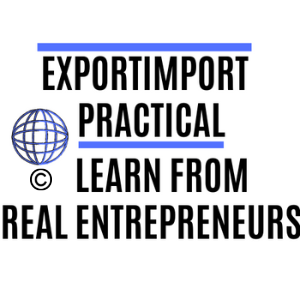
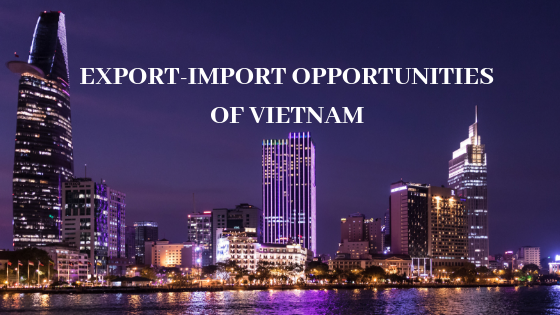
2 comments